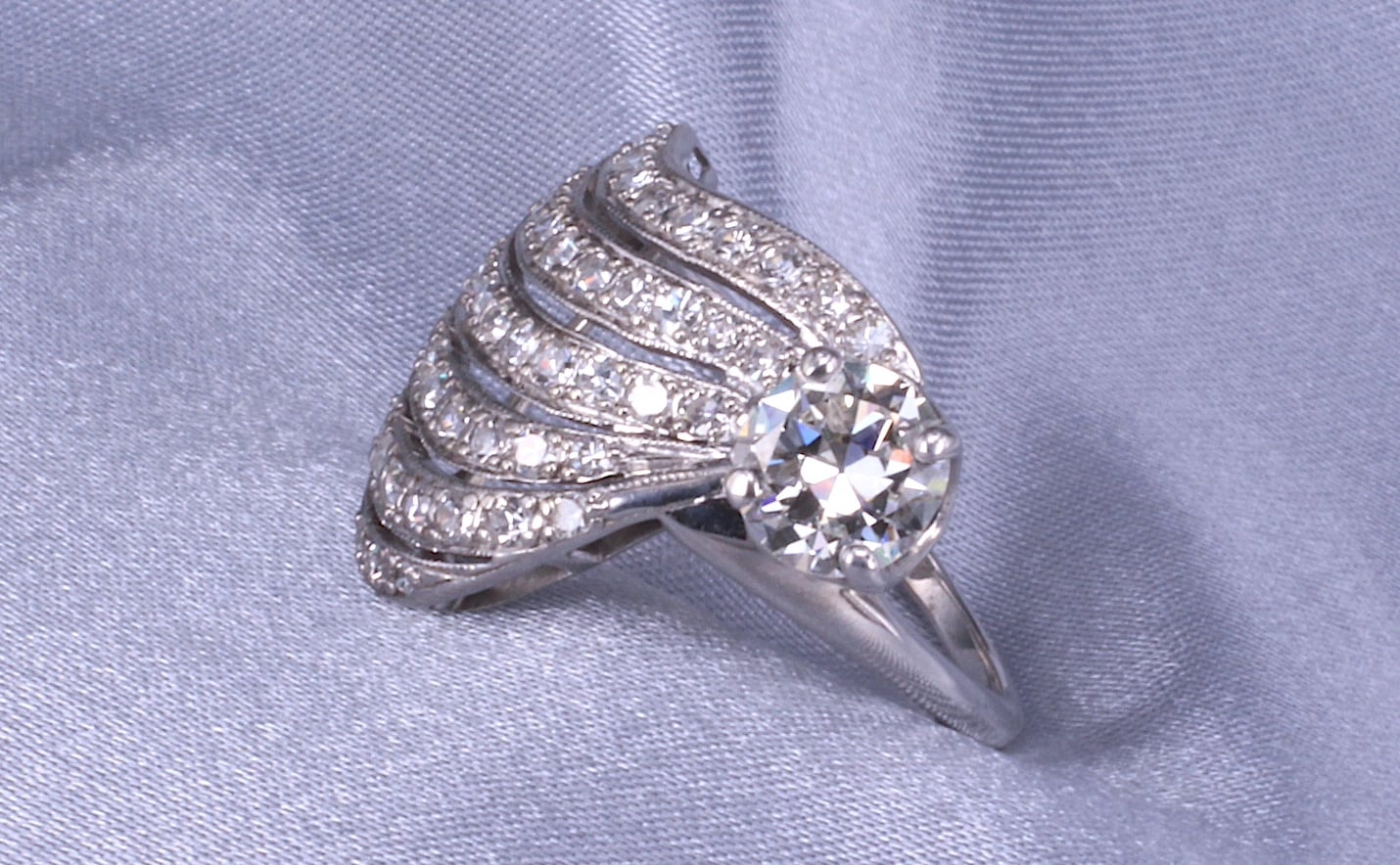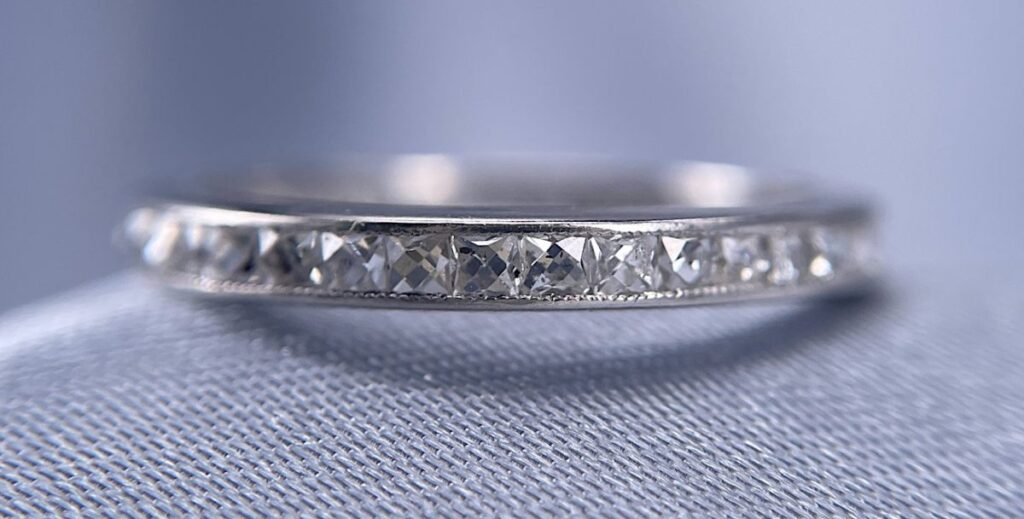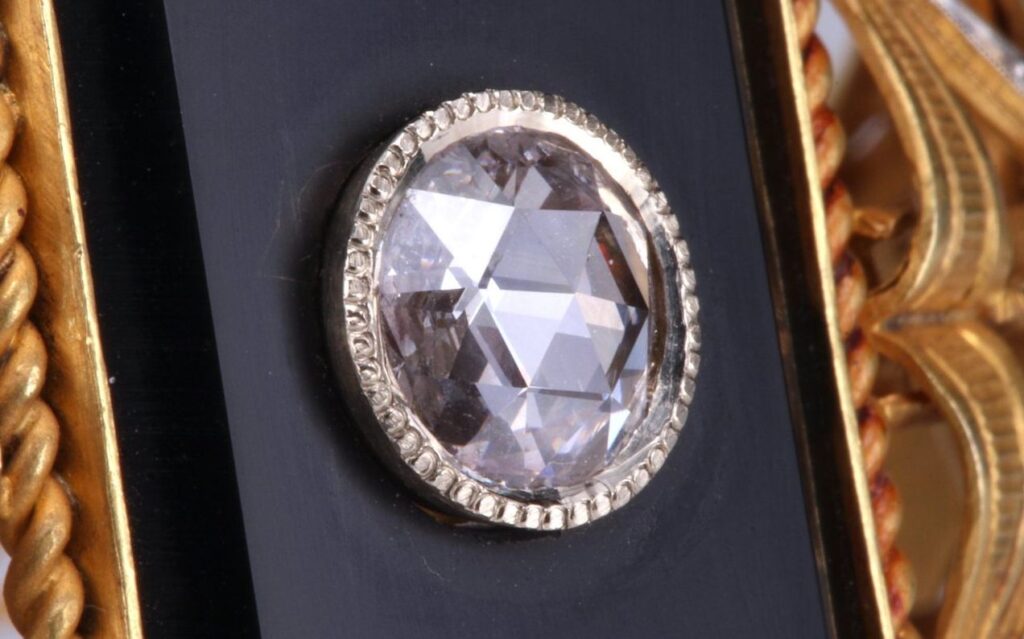
04 Mar Antique Diamond Jewelry Design
Carl Blackburn of C. Blackburn Jewelers is a San Diego jewelry designer and diamond buyer who creates custom engagement rings and fine jewelry with both modern cut diamonds, as well as antique diamonds. As a vintage-inspired jewelry designer, Carl can take an antique cut loose diamond and build an engagement ring, diamond earrings, or pendant necklace around the diamond. He can also source for you both new and antique diamonds to use in his custom jewelry designs. Or, if you own an antique diamond, he will happily pay you a fair cash price for it. To learn more, schedule an appointment with Carl by calling 858-251-3006.
Antique Diamond Cuts in Jewelry

Old European Cut Diamond Buyers
Old European cut diamonds are a type of diamond cut that was popular in Europe during the late 19th and early 20th centuries. They are sometimes referred to as “old mine cut”. But an old mine cut has a cushion shape, while old European cut diamonds are characterized by a round or slightly oval shape with a high crown, small table, and deep pavilion. The cut typically has 58 facets, including a large culet (a flat facet at the bottom of the diamond).
One of the defining characteristics of old European cut diamonds is their symmetry. Unlike modern diamonds, which are cut to maximize brilliance and fire, old European cuts were designed to maximize the diamond’s natural color and sparkle. As a result, old European cut diamonds tend to have a softer, more romantic appearance than modern diamonds.
Another characteristic of old European cut diamonds is their high level of craftsmanship. Because they were cut by hand, each diamond is unique and exhibits subtle variations in symmetry, facet size, and overall appearance. This is part of what makes old European cut diamonds so desirable to collectors and vintage jewelry enthusiasts.
While old European cut diamonds are no longer commonly used in modern jewelry, they remain highly sought after by collectors and connoisseurs. Their unique beauty, historical significance, and rarity make them a valuable and cherished part of the diamond industry’s heritage. If you would like to buy or sell old European cut diamond jewelry, contact C. Blackburn Jewelers.

Jubilee Cut Diamond Buyers
Jubilee is a rare diamond cut that was inspired by the famous Jubilee diamond: a large, historic diamond that was discovered in South Africa in 1895, during the reign of Queen Victoria. The diamond weighed 650.80 carats in its rough state and was the largest diamond ever found at the time. It was named the Jubilee Diamond in honor of Queen Victoria’s Diamond Jubilee, which was celebrated in 1897.
The Jubilee Diamond was purchased by the diamond trader Sir Julius Wernher and was eventually acquired by the British royal family in 1936. Today, the Jubilee Diamond is part of the British Crown Jewels and is on display in the Tower of London.
The Jubilee Diamond was cut by Joseph Asscher, a renowned diamond cutter from Amsterdam, into a cushion-shaped diamond that weighs 245.35 carats. The diamond has 88 facets and is considered one of the finest examples of diamond cutting in history.
The Jubilee Diamond has been worn by several British monarchs, including Queen Elizabeth II, and is considered one of the most valuable and historic diamonds in the world. Its beauty and historical significance have made it a cherished part of the British Crown Jewels and a symbol of the enduring relationship between the British monarchy and the diamond industry. Contact C. Blackburn Jewelers to buy or sell Jubilee cut diamond jewelry.

Old Mine Cut Diamond Jewelry Design
Old mine cut diamonds are a type of diamond cut that was popular during the 18th and 19th centuries. They were primarily cut by hand, using simple tools and techniques, and are considered one of the earliest forms of diamond cutting.
Old mine cut diamonds have a slightly squarish or rectangular shape with rounded corners, which is known as a cushion cut. They have a high crown, small table, and large culet, which is the flat facet at the bottom of the diamond. The combination of these features creates a soft, romantic appearance with a subtle, glowing sparkle.
One of the defining characteristics of old mine cut diamonds is their unique pattern of light and dark areas, known as a “chunky” or “crushed ice” appearance. This is due to the irregular arrangement of facets and the use of large, irregularly shaped diamond crystals.
Because old mine cut diamonds were cut by hand, each diamond is unique and exhibits subtle variations in symmetry, facet size, and overall appearance. They are highly prized by collectors and connoisseurs for their historical significance and unique beauty.
Old mine cut diamonds were eventually replaced by more modern cuts, such as the round brilliant cut, which was introduced in the early 20th century. However, they remain highly sought after by those who appreciate their unique charm and vintage appeal.
If you would like to have custom jewelry designed around a large old mine cut diamond (or several old mine cuts), contact San Diego jewelry designer Carl Blackburn of C. Blackburn Jewelers to discuss the item you have in mind. Call 858-251-3006.

French Cut Diamond Jewelry Design
The term “French cut” is often used to describe a specific style of diamond cutting that emerged in France in the early 20th century. However, the history of French cut diamonds dates back much further, to the 15th century.
During the Renaissance, diamond cutting began to evolve in Europe, with the development of new cutting techniques that allowed for more precise and intricate shapes. The first diamond cutters were based in Italy, but the art of diamond cutting soon spread to France and other countries.
French cut diamonds, as we know them today, first emerged in the early 20th century. Prior to this time, diamonds were typically cut in a style known as the old European cut, which featured a high crown and large facets that were designed to maximize the stone’s brilliance in candlelight.
The French cut, on the other hand, is characterized by a rectangular or square shape with a flat table and truncated corners. The pavilion (bottom) of the diamond is cut into small, rectangular or triangular facets that create a unique pattern of light and dark areas, giving the stone a distinctive sparkle.
The French cut quickly became popular among diamond buyers and soon became the standard for diamond cutting in the industry. Today, French cut diamonds are still highly prized for their unique beauty and distinctive style. They are often used in vintage and antique jewelry, as well as in modern designs that seek to capture the elegance and sophistication of this classic cut.
Talk with San Diego jewelry designer Carl Blackburn about creating custom jewelry set with French cut diamonds, such as diamond eternity bands, engagement rings, diamond bracelets, and necklaces. Our estate jewelry store is conveniently located in beautiful La Jolla Cove.

Rose Cut Diamond Jewelry Designs
The rose cut diamond is one of the oldest known diamond cuts, with a history that can be traced back to the 16th century. The name “rose cut” is believed to have originated from the diamond’s shape, which resembles the petals of a rose.
The rose cut was developed in the early days of diamond cutting, when gem cutters were still working with rudimentary tools and techniques. The cut was designed to maximize the beauty of the diamond in low light conditions, such as candlelight. The diamond was cut with a flat base and a domed top, with triangular facets arranged in a symmetrical pattern around the crown. The facets were designed to catch and reflect as much light as possible, creating a dazzling display of sparkle.
The rose cut remained popular throughout the 17th and 18th centuries, particularly in Europe, where it was used in everything from rings and earrings to tiaras and brooches. However, by the 19th century, advances in diamond cutting technology had led to the development of new cuts, such as the brilliant cut, which offered even more brilliance and fire than the rose cut.
Despite this, the rose cut remained popular among jewelry designers and collectors, and experienced a resurgence in popularity in the early 20th century, particularly in Art Deco jewelry. Today, the rose cut is still appreciated for its unique beauty and vintage charm, and is often used in antique and vintage-inspired jewelry designs by jewelry designers such as Carl Blackburn of C. Blackburn Jewelers in La Jolla, CA.

Antique Single Cut Diamond Buyers
Antique single cut diamonds are a type of diamond cut that originated in the late 1800s and were popular through the early part of the 20th century. They are characterized by a circular shape with a large table (top) and a small number of facets, typically around 16 to 18.
The term “single cut” refers to the fact that these diamonds are cut with a single row of facets, rather than the multiple rows of facets that are found in more modern diamond cuts. The facets themselves are typically triangular or kite-shaped, and are arranged in a pattern that creates a distinctive star-like appearance.
Antique single cut diamonds were popular during the Art Deco and Art Nouveau periods, and were often used in engagement rings, brooches, and other types of jewelry. Because they were cut by hand, each diamond is unique, with slight variations in size, shape, and facet arrangement.
Today, antique single cut diamonds are highly sought after by collectors and jewelry designers who appreciate their vintage charm and rarity. They are often used in antique and vintage-inspired jewelry designs, and are prized for their unique beauty and historical significance. However, because they are relatively rare and difficult to find, antique single cut diamonds can be quite expensive, particularly in larger sizes.
Contact the San Diego diamond buyers at C. Blackburn Jewelers to sell antique single cut diamond jewelry, as well as large carat diamonds of any shape, size, and cut. Start now by sending us a message below, describing the diamond that you would like to sell.
Text Message & Photos:
619-723-8589






